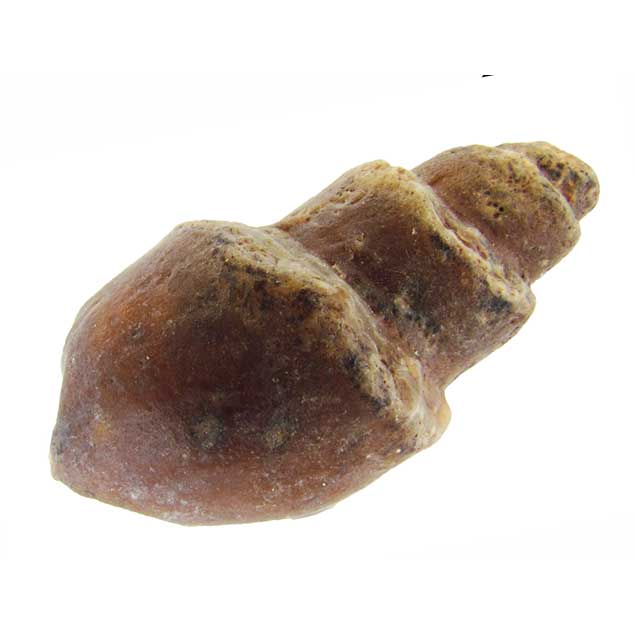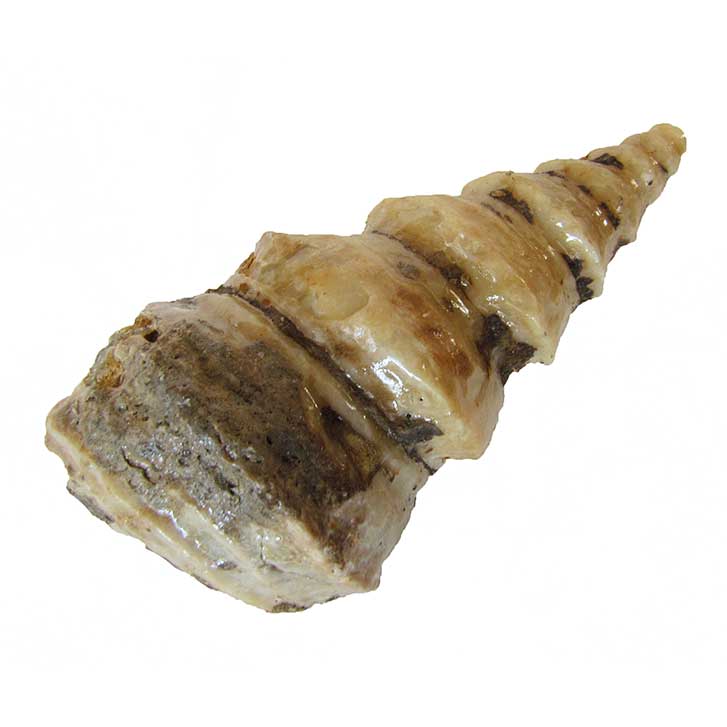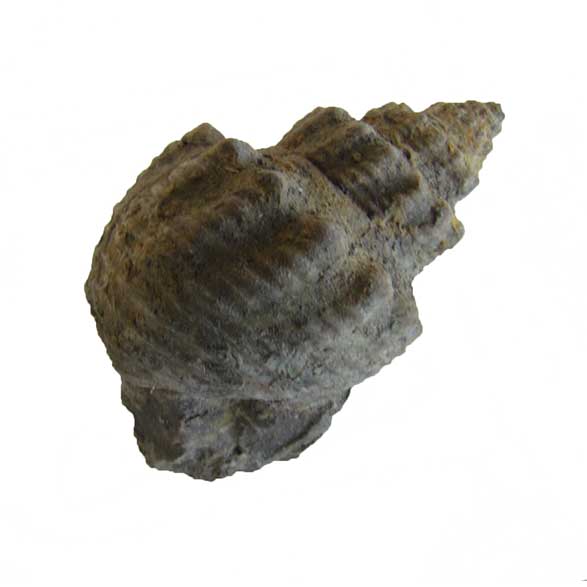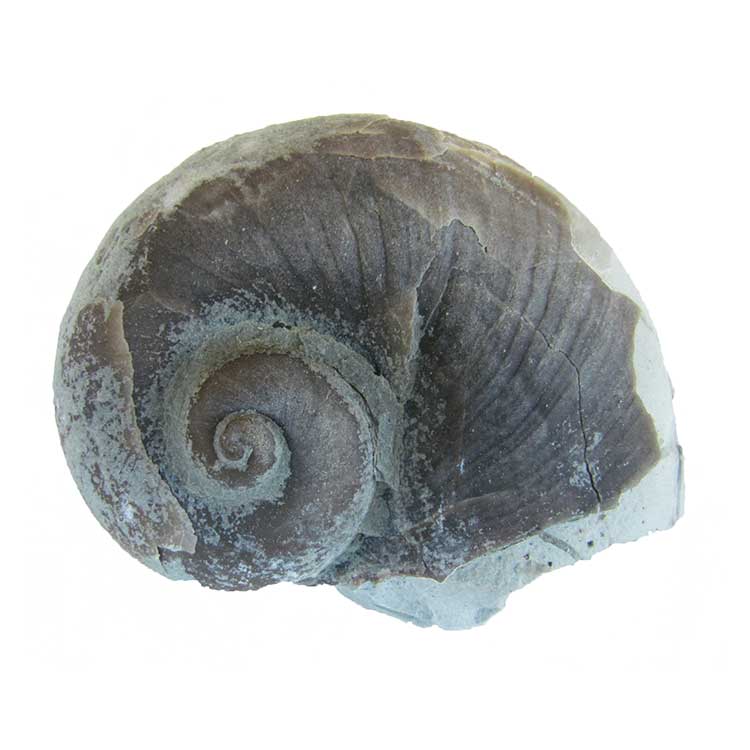Sign up for Lesson Plans, discounts & more!
Fossil Gastropods: Where They’re Found, Identification & More
Did you know that the class Gastropoda is comprised of more than 65,000 unique animal species (gastropods) It is the largest class within the phylum Mollusca.
Gastropods, known commonly as snails and slugs, represent an incredibly large taxonomic class of invertebrates living in fresh and saltwater as well as on land. The majority of gastropods sport a conical or coiled shell (although slugs lost this as part of their evolutionary history).
In this guide, we’ll cover a broad range of information regarding gastropods, their fossils, where to search for them, and how to identify them.
Gastropods: an evolutionary success story
Having evolved during the early Cambrian period, this class of animal has since thrived. It ranks among the few groups of animals that have achieved success in continental freshwater, salty oceanic environments and on land.
But that doesn’t mean they made any progress up the food chain. On the contrary, some are food sources for us humans, with several being a delicacy in some circles. For example, the conch, abalone, limpets, whelks, and snails (escargot).
Basic Identification and Features
What gives gastropods their signature look? Large foot, coiled shell, tentacles and the presence of torsion. Torsion is a unique characteristic where the body is twisted round in such a way that the reproductive organs, anus, gills and mantle cavity all point in a forward direction.
Although not all of these features are present in all gastropods, the presence of each may be a good indicator you’ve found on. For example, while gills are present in the majority of aquatic gastropods, they are absentee with our land-based friends (such as the snail).
What About Gastropod Fossils?
We’re glad you asked. The shell is the portion of a gastropod which may become fossilized over time. This shell is made up of three distinctive layers:
A thin, colored outer layer
A thin “mother of pearl” inner layer; and
A thick calcareous middle layer
Such shells may be plainspirally coiled, although the majority present as a helicoidal-forming spire with the juvenile (original) shell (called a protoconch) preserved at the apex.
With some specimens, there is a hollow tube-like canal, while others boast a horny lid called a operculum on the foot and located near the aperture of the shell.

What Can The Biology of Gastropods Tell Us About these Creatures and Their Fossils?
Primary Groups of Gastropods
Prosobranchs (Subclass Prosobranchia)
Opisthobranchs (Subclass Opisthobranchia)
Pulmonates (Subclass Pulmonata)
TIP: Many authoritative bodies classify Pulmonates as a subgroup within the subclass Opisthobranchia
Prosobranchs and Prosobranch Fossils
Prosobranchs are known to secrete a substance that creates a formidable shell over time, into which it withdrew when alive. This, combined with an oft-calcified disc on the rear of the foot, acted as a superior defense against predators.
Prosobranchs also are noted for the distinctive presence of torsion in both males and females alike. Having inhabited freshwater marine habitats, the prosobranchs are comprised of two distinctive groups:
Archaeogastropods – featuring two auricles in the heart, distinctive gills (sometimes in pairs) and a sometimes-paired kidney
Caenogastropods – featuring a singular kidney, gill and auricle in the heart
Opisthobranchs and Opisthobranchs Fossils
Opisthobranchs are an interesting bunch, known for colorful bodies and a thin or absent shell. While some have retained their coiled appearance, others have lost this distinctive torsion and instead present as bilaterally symmetrical.
Some species lost their shells completely, while those that retained it sport a thin fragile exterior. Because of this, it is quite rare to find fossils of Opisthobranch shells.
Pulmonates and Pulmonates Fossils
Pulmonates are your typical slug or snail. Although lacking an operculum, these creatures often have varied and complex body structures. For example, with some, the pulmonary cavity (lung) also acts as a water reservoir.
Thin-shelled, these gastropods were abundant in freshwaters, enjoying plant growth around lake shores. They also inhabited terrestrial (land) environments, taking advantage of lungs located in the mantle cavity. Of note, these gastropods are hermaphrodites (neither distinctively male nor female).
Consisting of Two Primary Groups:
Basommatophores – featuring a single pair of tentacles with eyes at the base of each.
Stylommatophores – eyes located at the posterior. Thin or absent shelled.
The Wonderful World of Gastropods
We hope that you enjoyed this brief guide on Gastropods and where today’s gastropod fossils come from. Luckily, unlike many creature that have come before them, gastropods are still a thriving group of land and water-bound creatures we can enjoy today…from local streams and woodlands, to the dinner plate.
The fossil gastropods pictured on this page can be found for sale on Fossilicious.com.
Check out some of the Educational Materials for sale on our sister site fossilicious.com.

interested in more? If so, you may want to check out our other sites:
fossilicious.com - Our online fossil and mineral rock shop.
rocksandminerals4u.com - An educational site about rocks, minerals, and geology.
Geologic Time Geologic Time Line
Cenozoic Era
Quaternary
Neogene
Paleogene
Mesozoic Era
Cretaceous
Jurassic
Triassic
Paleozoic Era
Permian
Carboniferous
Devonian
Silurian
Ordovician
Cambrian
Archean Time
Hadean Time
Teachers Resources
Activities for Education and Fun
Earth Science Lesson Plans
Activities For Kids
Fossil Lesson Plans
Fossil Activities
Education Articles
Coloring Pages
Dinosaur Coloring Pages
Montessori Materials
Geology Club
Fossil Hunting
 |
 |
 |







